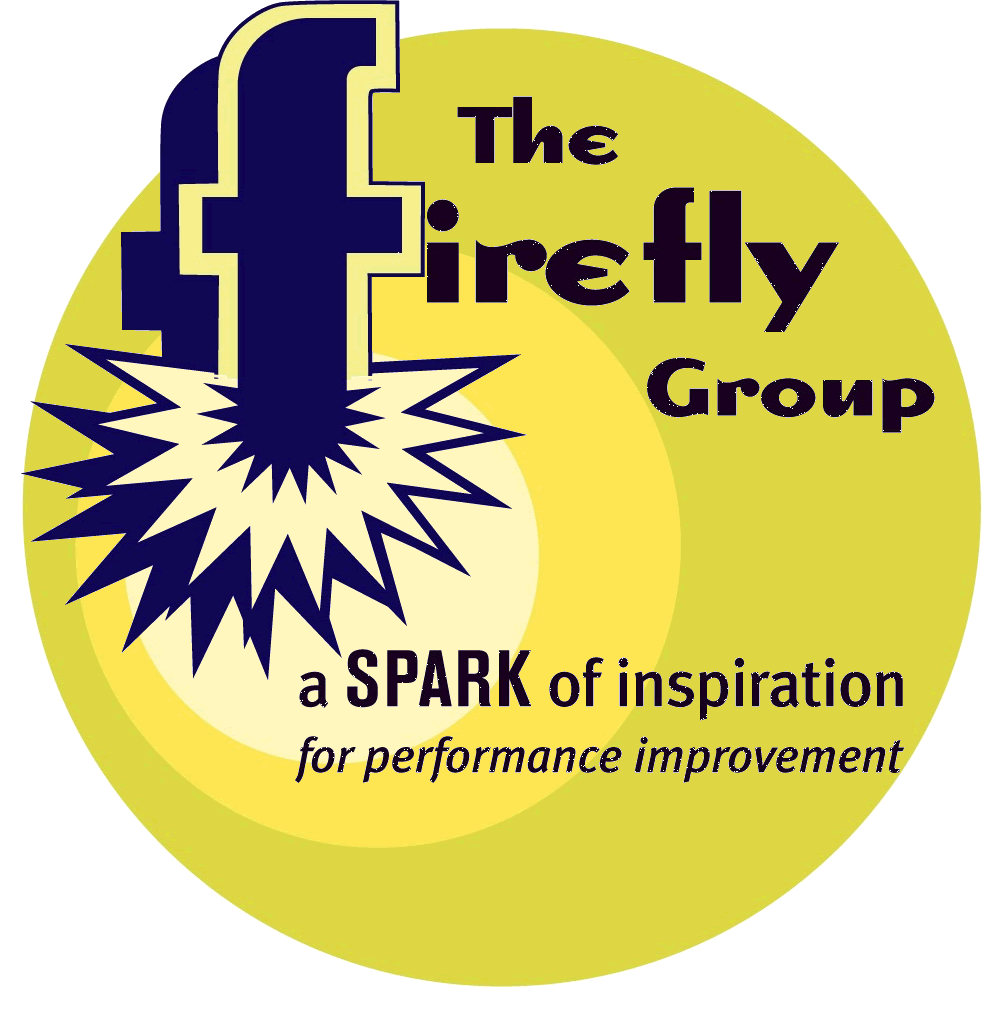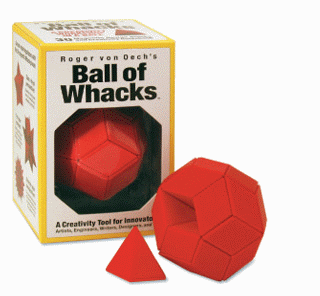


July 2008
In this Issue:
|
Say
It Quick |
Discoveries bits of serendipity to inspire and motivate |
Ideas fuel for your own continuous learning |
Activities tips and tricks you can try today |
| Corroded Comparisons | Ball of Whacks | Thinking that Flows | Get Moving! |
Say
It Quick
Here's a story in 99 brief words to spark the flow of
creativity for you. What comparisons can you make with our Discovery
column in this issue?
Corroded Comparisons
Among all the wonderful choices at the conference, one decision was easy. I did not go to "Creativity: thinking outside the box." After all, I reasoned, how novel can the session be if it uses a hollow, rusted analogy to promote itself? Besides, breaking out of a box is not very difficult. And when you're free, you're still in the same damn room!
I favor fresh metaphors that inspire. Why not "thinking beyond the horizon," "break out of jail thinking," or "conjuring explosive ideas?"
If you can do it in the title, there's hope for the workshop!

Ball of Whacks,
A Creativity Workshop in a Ball
by Roger von Oech
I love toys and Ball of Whacks has me hooked. Thirty plastic pyramids
are fitted with magnets so they stick together with a satisfying "clack" to
form a variety of geometric shapes. The possibilities for creating stars,
polygons, patterns, and random forms are limited only by imagination and accident.
I mention imagination because you can try to recreate the designs in the accompanying
96-page information booklet. But accident, I found, was a much more satisfying
process. The pieces seem to "jump" into place forming surprise designs that,
like a stream of consciousness, lead to further discoveries. And this is one
of the major intentions of this kinetic toy.
Roger von Oech is the author of A Whack on the Side of the Head, a book which describes the creative process and offers exercises to flex the inventive muscles. He designed the Ball of Whacks to take advantage of the connections between the hand, the brain, and the creative process. As our hands manipulate the whack pieces, our brain slips into a state of flow - critical for creativity. So simply maneuvering the pieces becomes the most obvious way to make this toy an essential part of your creative work. In addition, the information booklet gives more than a dozen suggestions for inducing the creative process for individuals, partners, and small groups. Use it as you meditate. Think of it as a metaphor for a problem. Start a brainstorming session. Or just take a mental stretch break!
Learn more at www.creativewhack.com.
In his book, Creativity, Mihaly Csikszentmihalyi, interviewed dozens of people in the arts, science, and social sciences about how their most creative ideas came to them. Critical for everyone was a state of flow, a mental state where the workings of the body are on autopilot while the brain is making freewheeling stream of consciousness connections. Most of us have experienced this. We get some of our best ideas while driving, during a walk, or taking a shower.
Researchers who work with children who have autism notice something similar. There is a strong connection between movement and the ability of some children with autism to think more clearly. Given a program that includes stretching and exercise these children become unstuck in their thinking patterns. Sometimes facilitated communication is used in which someone supports the child's hand while they type messages on a keyboard.
There are other ways we can see the connection between movement and thinking. Most everyone has gone into another room only to forget what they wanted to do there. The solution, usually, is to return to your starting place to recapture your original thoughts. Here is a case where our movement into the new room resulted in a short state of flow. Our mind took its own rapid-fire vacation that was so convoluted that we had to return to our physical beginning to remember our mental starting place.
Flow is vital for thinking and learning. If we were to include more opportunities for flow in our day we would not eat lunch at our desks. We would say "No" to lunch meetings and "Yes" to noon power walks. We would insist that schools not cut physical education classes and we wouldn't let teachers take away recess as a punishment for children who squirm in class. And we wouldn't let ourselves slide into the brain-numbing lethargy enjoyed by couch potatoes.
Get Moving!
Feeling stuck? Can't solve a problem? Struggling with writer's block? The next time you feel stalled in your work try this: get up and get moving. Take a walk down the hall. Stroll around the building. Saunter to the coffee pot and back. You don't have to go far. You don't have to take long. A few minutes and maybe the "long way around" to the water cooler should do it.
Then, notice what happens when you get back to work. How is your energy level? Any new ideas? Maybe you just feel ready to get down to business. Whether it's the movement, a fresh perspective, more air in your lungs, or a brief state of flow, something's liable to be different. If not, try it again!
And don't worry that someone might think you are procrastinating, you aren't! You are creating a space for mental neurons to discover new pathways and connections!
Read previous
issues.
Click Archives!
To add or delete your name to our mailing list, email
with a short note in the subject line.
We want this newsletter to be practical, succinct, and thoughtful. If you have suggestions about how we can meet these criteria, please let us know! Send us an with your thoughts and ideas.
Home
| Services
| Products
| Mission
| Ideas |
The Group
| The Buzz
(c)
2005 The Firefly Group